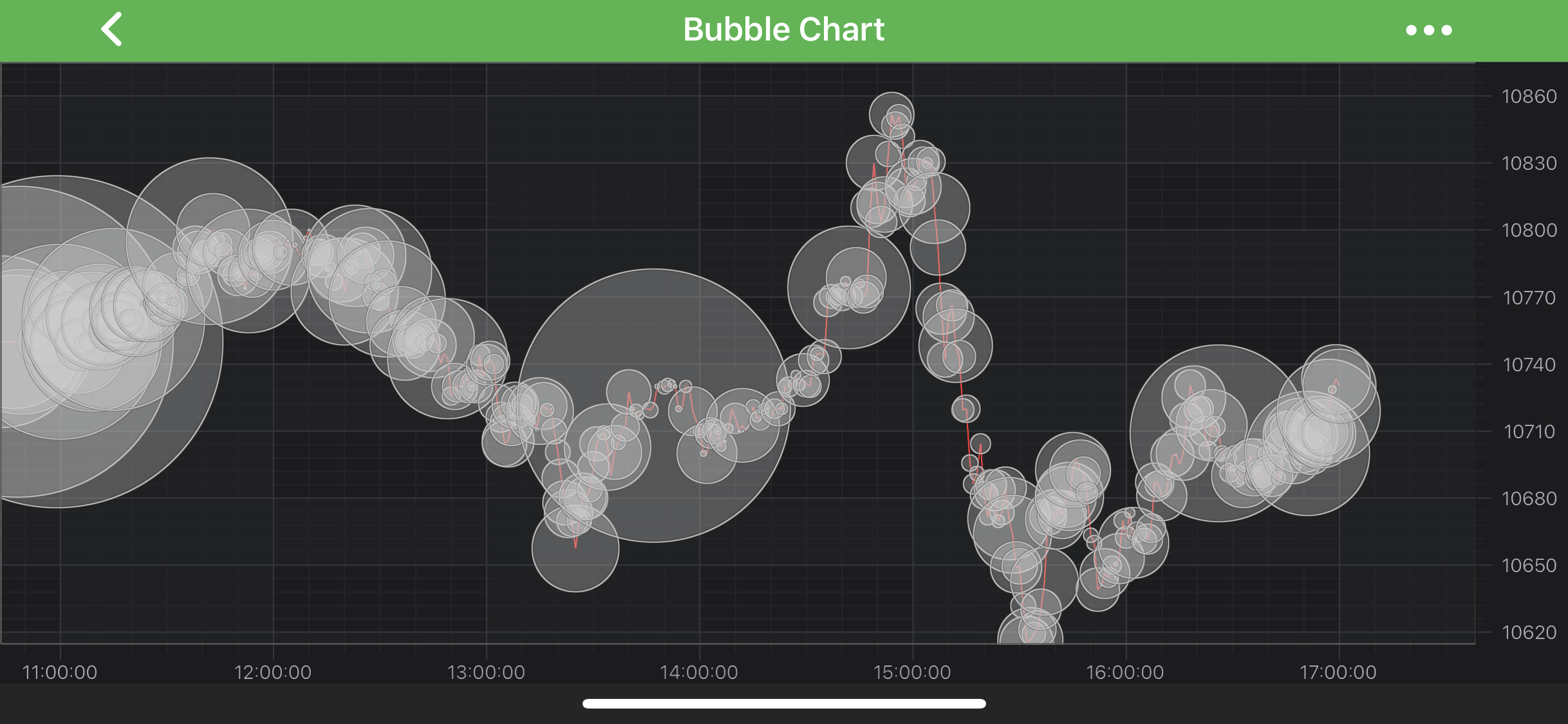
iOS & macOS Charting Documentation - SciChart iOS & macOS Charts SDK v4.x
The Bubble Series Type
Bubble Chart is provided by the SCIFastBubbleRenderableSeries class. It accepts data (X, Y, Z) from a SCIXyzDataSeries and renders a bubble at each [X, Y] with Z bubble scale.
NOTE: For more info about
SCIXyzDataSeries, as well as other DataSeries types in SciChart, see the DataSeries API article.

NOTE: Examples for the Bubble Series can be found in the SciChart iOS Examples Suite as well as on GitHub:
The SCIFastBubbleRenderableSeries class allows to specify BubbleBrush and Stroke via the following properties:
NOTE: To learn more about Pens and Brushes and how to utilize them, please refer to the SCIPenStyle, SCIBrushStyle and SCIFontStyle article.
Also, you can control bubbles scaling using the following properties:
NOTE: In multi axis scenarios, a series has to be assigned to particular X and Y axes. This can be done passing the axes IDs to the
ISCIRenderableSeries.xAxisId,ISCIRenderableSeries.yAxisIdproperties.
Create a Bubble Series
To create a Bubble Series, use the following code:
Bubble Series Features
Bubble Series also has some features similar to other series, such as:
Render a Gap in a Bubble Series
It’s possible to render a Gap in Bubble series, by passing a data point with a NaN as the Y value. Please refer to the RenderableSeries APIs article for more details.
Paint Bubbles with Different Colors
In SciChart, you can draw each bubble of the Bubble Series with different colors using the PaletteProvider API.
To Use palette provider for Bubbles - a custom ISCIFillPaletteProvider (or ISCIStrokePaletteProvider) has to be provided to the ISCIRenderableSeries.paletteProvider property. Please refer to the PaletteProvider API article for more info.
 View on GitHub
View on GitHub